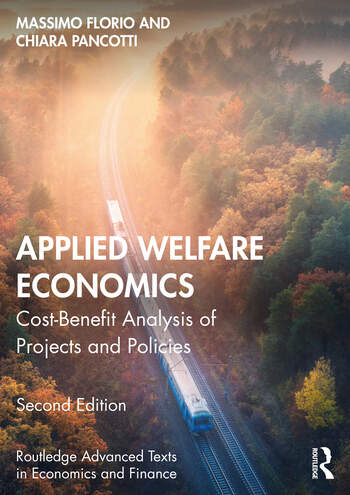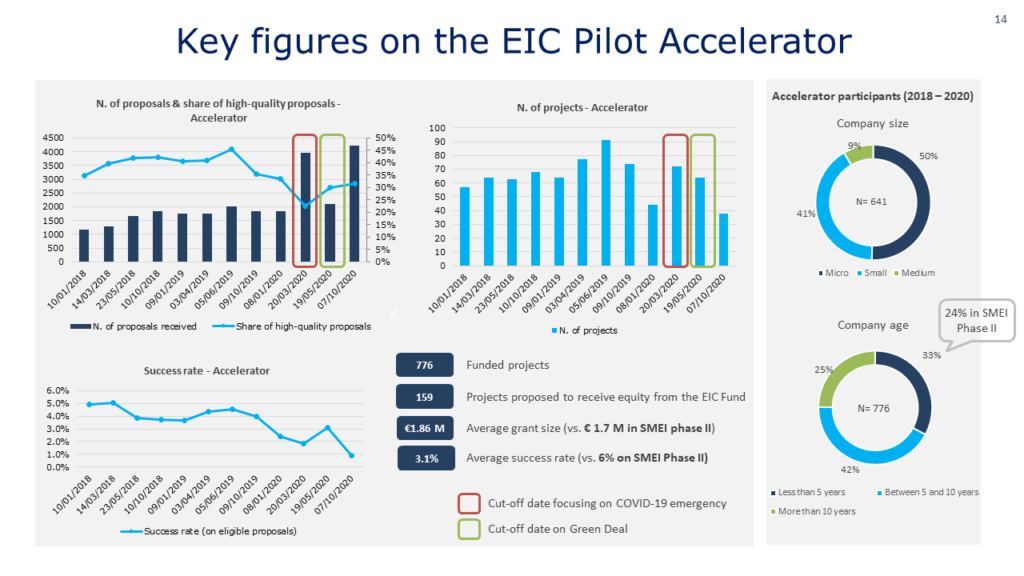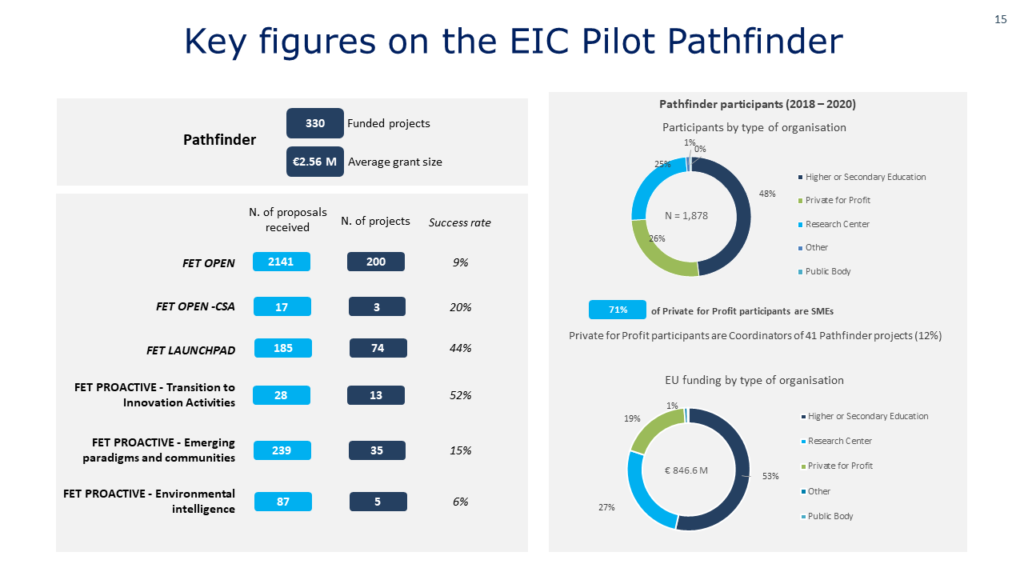“European pharmaceutical research and development. Could a public infrastructure overcome market failures? is available online. The working paper -authored by prof. Massimo Florio and Chiara Pancotti - discusses a new European approach to pharmaceutical policy, exploring the idea of a Europe-wide public infrastructure with budgetary autonomy and home-grown research and development capacity. This organisation would be tasked with building a portfolio of new medicines and related biomedical technologies up to the delivery stage over 30 years, in partnership with third-party research centres at the national or European level and with companies. It would be the world’s most important global player in biomedical innovation.
CSIL working paper draws from selected parts of a study that was originally published by the Panel for the Future of Science and Technology (STOA), managed by the Scientific Foresight Unit of the Directorate for Impact Assessment and European Added Value, within the Directorate-General for Parliamentary Research Services (EPRS) of the European Parliament, with M. Florio as principal investigator. The Working Paper aims to disseminate some findings.
Florio M, Pancotti C (2022), “European pharmaceutical research and development. Could a public infrastructure overcome market failures?”, Working Papers 2022/02, CSIL.
As part of its specialised observatory on materials, CSIL carried out research on the Italian marble market, a sector worth over 4 billion and representing one of the Made in Italy leading sectors.
The marble world involves highly specialised working technology, spanning from automation systems supply to different machinery integration.
CSIL research reveals that in 2021, “the Italian industry of natural stone and marble climbed over the 2019 levels, and a further 20% growth is registered for exports during the first half of 2022 (especially for finished products).”
The next issue of World Furniture Online will feature an article by Aurelio Volpe titled “The wonderful world of marble”, which dips into leading clusters in Italy and abroad, new actors entering the market and the different and broad applications of the materials, including art.
In the meantime, browse World Furniture’s latest issue.
"Estimations of SDR in selected countries" is available online. The working paper, authored by CSIL researchers Jessica Catalano and Chiara Pancotti, provides new estimates of the social discount rate (SDR), one of the key parameters used in the cost-benefit analysis framework to assign a present monetary value to costs and benefits occurring at different points in time and spreading over a long-term period. The paper draws upon work carried out in the framework of the ongoing H2020 Future Circular Collider Innovation Study to calculate an ad hoc SDR to be used in the socio-economic impact assessment of the Future Circular Collider (FCC). For this estimation, the authors selected the countries contributing to the CERN budget, including the EU27 Member States and the non-EU Member States. Beyond providing a new estimate of SDR, this paper also discusses the impacts of the COVID-19 pandemic crisis on the SDR, presenting two different scenarios (before and after).
Catalano G, Pancotti C (2022), “Estimations of SDR in selected countries”, Working Papers 2022/01, CSIL.
CSIL has recently contributed to a study for the European Parliament which proposes the creation of a permanent European public infrastructure focusing on threats and areas of research and development that are underinvested given the current business model. This science-driven infrastructure would have the mission to develop new drugs, being involved in all phases of the development process, from independent research to commercialisation. This new player should focus on public health priorities and create knowledge and biomedical innovation as a common good. Supported by EU governments, open to third parties and in dialogue with civil society, the infrastructure should renounce economic privileges arising from patents.
On 28 September 2022, the European Parliament will host a roundtable discussion on the purpose and feasibility of creating a European medicines infrastructure. The event will gather experts from research, industry, civil society, and governmental and non-governmental organisations to discuss the development models for such a structure. The meeting, organised by the STOA panel, will be held in a hybrid format at European Parliament (Room SPAAK 7C50) and online (upon previous online registration)

Ahead of the workshop, CSIL founder Massimo Florio, with Fabrizio Barca, coordinator of the Forum on Inequalities and Diversity, launched an Open Letter to the EU institutions and governments asking them to consider the proposal of such public infrastructure and endorse it. The appeal is promoted by the Forum on Inequality and Diversity (Italy), where the idea originated, and by several associations and individuals.
To sign the appeal, write an email to: perbiomedeuropa@gmail.com with name, surname, role and affiliation, specifying in the email the consent to publish your name on the website of the Forum on Inequalities and Diversity.
For more information, see:
Massimo Florio and Chiara Pancotti authored the second edition of Applied Welfare Economics: Cost-Benefit Analysis for Project and Policy Evaluation, published by Routledge. The volume presents a consistent framework for applied welfare economics and is grounded in a comprehensive theory of cost-benefit analysis, specifically focused on offering a practical approach to policy and project evaluation. After opening with a theoretical discussion, the book introduces readers to an applied framework and discusses the state of the art of international experience with CBA. The empirical chapters draw from first-hand research, gained by the CSIL team from years of advisory work for the European Commission, European Investment Bank and other international and national institutions.

This second edition presents updated references, more international examples, and more coverage of topics such as the social discount rate for projects or policies with very long run impacts and the application of CBA in new contexts. It also features a new chapter on the use of CBA in Regulatory Policy end-of-chapter questions to aid reader’s learning.
CSIL Market Research unit estimates that the European market for furniture, furnishing and wellness absorbed around 5.1 million units of bathroom furniture, 16.5 million accessories, 5.6 million mirrors, 4.2 million shower screens, 5.8 million shower arms, 2.3 million shower trays, 214 thousand among whirlpools and 339 thousand multifunctional shower booths, around 72.6 million faucets, 3.9 million acrylic sinks and 2.4 million acrylic bathtubs, almost 21.4 million units of hydrosanitary, and 29.2 million WC seat.
In 2021, sales of bathroom equipment outperformed not only the economy but also the residential construction output. Following a 3.5% contraction in 2020, the bathroom market rebounded by 12% to 15.5 million EUR, well above the 14.4 billion EUR of 2019. Double-digit growth rates are estimated for all the main segments of the market (vanities, showers, faucets, ceramic hydrosanitary ware, bathtubs). Across countries, these positive results were more heterogeneous, ranging from a year-on-year growth of 3.2% in Norway to a hike of 21% (in euro currency) in the United Kingdom.
The top ten players covered almost the 45% of the market, while at least 500 SMEs populate the remaining 55%. In 2021, companies that outperformed include both big groups (Grohe, Hansgrohe, Ideal Standard, Norcros) and design-oriented players (Absara-Hydrobox, Arbi, Duravit, Gessi, Porcelanosa, Svedbergs). During 2020 and 2021, the integration process continued.
For 2022, CSIL forecasts a growth of 2.7% year-over-year for the European bathroom equipment market. Many companies interviewed have confirmed this positive trend, recording increasing orders in the first half of 2022 despite the rising prices and economic and geopolitical situation. Nevertheless, uncertainties posed by the ongoing war and geopolitical context may lead to significant downside risks to economic growth, construction output and related construction products.
Find out more on CSIL Report - The European market for bathroom furniture, furnishings and wellness, edition July 2022.
Photo credit: Salone Internazionale del Bagno/International Bathroom Exhibition
From 30 May to 3 June, at the Sorbonne Université in Paris, the FCC week brought together the community working towards the Future Circular Collider, a world-leading high-energy physics infrastructure.
CSIL presented the progress made to assess the socio-economic impacts of the FCC, part of our work within the EU-funded H2020 FCCIS project.
Professor Massimo Florio addressed science in the context of European funding mechanisms and how funders of public investment in science and technology require applicants to demonstrate the expected socio-economic returns of their projects. The talk presented opportunities and requirements by the European Commission, European Investment Bank, ESFRI and other international and national funders of science and technology.
Emanuela Sirtori recalled definitions of the impact pathways and assumptions used to build the model to estimate the future impacts of the FCC-ee. CSIL has developed the model building on international practice and previous experience in evaluating the socio-economic impacts of Big Science projects.
Francesco Giffoni presented preliminary results of a new analysis to calculate the economic multiplier of the FCC-ee procurement on supplier companies and the mechanisms through which the procurement relationship might benefit the industry.
Find out more out the FCC week 2022
Read more about the FCCIS project

FCCIS – The Future Circular Collider Innovation Study. This INFRADEV Research and Innovation Action project receives funding from the European Union’s H2020 Framework Programme under grant agreement no. 951754.

The pandemic has fuelled the spread of working from home, which led to a redefinition of the customer’s demand for dedicated furniture and the rethinking of the workplace towards a 'hybrid' approach.
How are you experiencing working from home, and how did you design or are you planning to design your home office?
CSIL invites you to fill in a short questionnaire to bring out features of the home workspace. Instant results will be shown upon its completion.
The latest issue of World Furniture, CSIL economic and market analysis quarterly review, features an article focusing on the evolution of Cannabis legalisation in 16 selected countries. A recent study carried out by CSIL registred that law reforms are increasingly taking place in several countries to regulate its use and cultivation.
CSIL partner Jessica Catalano reports that significant attention is being paid to legalising cannabis’ medical use because of its relevance for improving patients’ health conditions by providing alternative and
more efficient treatments. Also, many countries are increasingly permitting hemp cultivation, considered a boost to the economy by offering new opportunities for investments and employment. Legislation for recreational use and cultivation is still lagging, and it seems unlikely in many countries.
The full article is available in the latest issue of World Furniture (p. 55)
Photo credit: Law Vectors by Vecteezy
CSIL discussed the main findings from the Evaluation study on the European Innovation Council Pilot with policymakers, business representatives and officers from various DGs and services of the European Commission, international organisations, and EU agencies.
Over the past year, CSIL has been leading the team in charge of the evaluation, carried out on behalf of the DG RTD of the European Commission as part of a Framework Contract on evaluating R&I policy and programmes. Together with partners from CSES, IPSOS and Oxford Research, we have been looking at the pilot’s performance and early signs of impact, using various evaluation tools.
The policy workshop gathered different points of view about the novelties and attractiveness of the EIC pilot. Reflecting on the role of the EIC in the EU R&I policy mix, attendees exchanged opinions on the Pilot role in building bridges between science and technology and accelerating the transition of innovation to the market. The discussion also touched on critical points regarding the pilot’s inclusiveness and how it could foster participation from less-represented countries and groups.


We would like to thank the over 80 participants who joined the online workshop and helped us reflect on the achievements of the EIC pilot and the challenges ahead, bringing together expertise diversified knowledge and expertise.
The study team will integrate the participants' opinions in the study’s final report, which will be published over the next months.